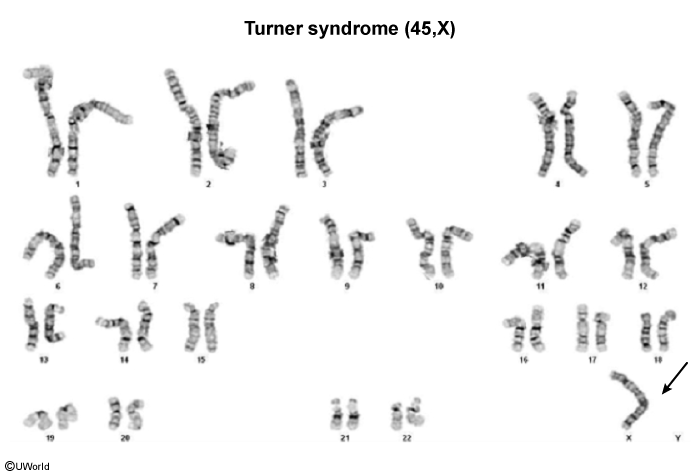Turner Syndrome
Article Sections
Introduction
Turner syndrome is a sex chromosome disorder caused by complete or partial loss of an X chromosome. Patients with Turner syndrome can develop a variety of complications that involve a multitude of organ systems (eg, cardiovascular, reproductive).
Pathophysiology and risk factors
Female individuals who are 46,XX undergo lyonization (random inactivation of one X chromosome in a given cell). However, certain genes remain active on the otherwise inactive X chromosome. Therefore, patients with complete or partial loss of an X chromosome only have 1 copy of these genes (ie, Turner syndrome), which affects growth and development.
The partial or complete loss of an X chromosome can result from any of the following:
- 45,X (Image 1): Approximately 50% of patients with Turner syndrome have monosomy X. Of these patients, two-thirds have a maternally derived X chromosome, and one-third have a paternally derived X chromosome. Aneuploidy most often occurs due to meiotic nondisjunction (ie, failed separation of homologous chromosomes or sister chromatids) during gametogenesis (
Continue Learning with UWorld
Get the full Turner Syndrome article plus rich visuals, real-world cases, and in-depth insights from medical experts, all available through the UWorld Medical Library.
Figures
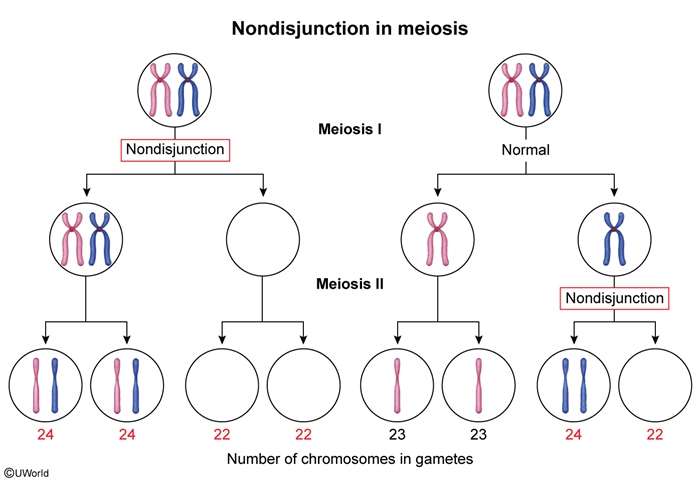
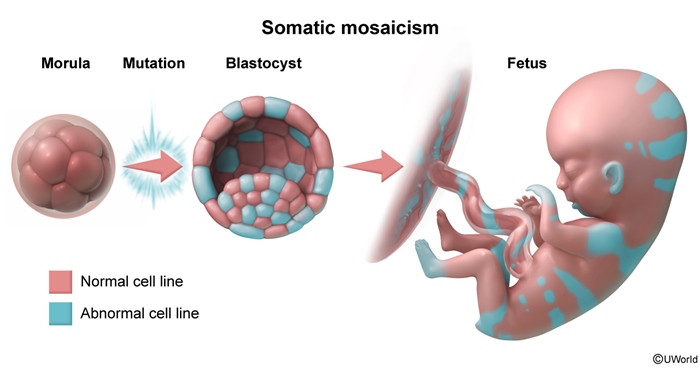
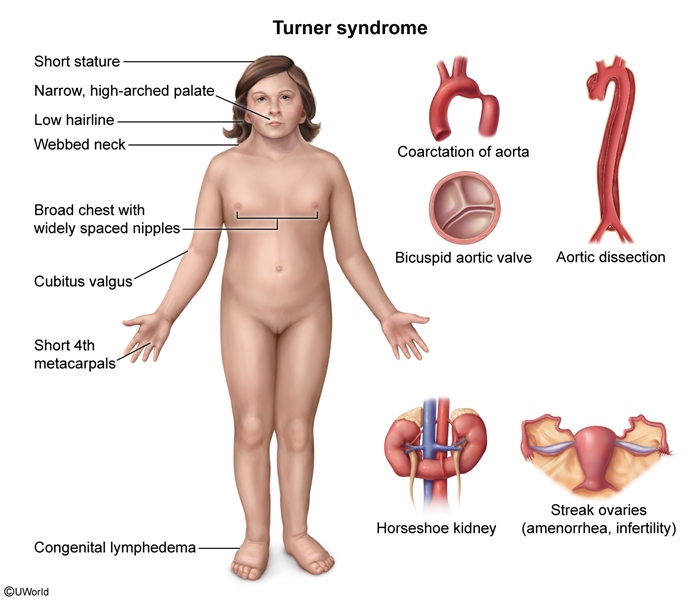
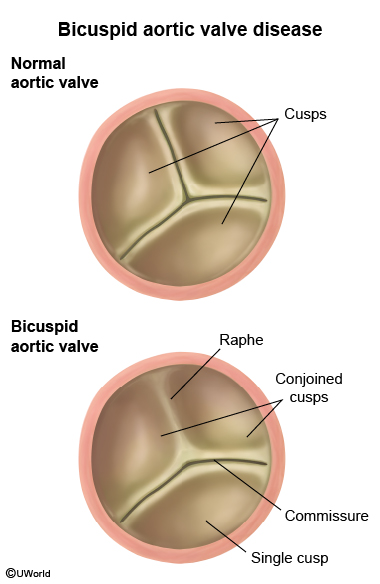
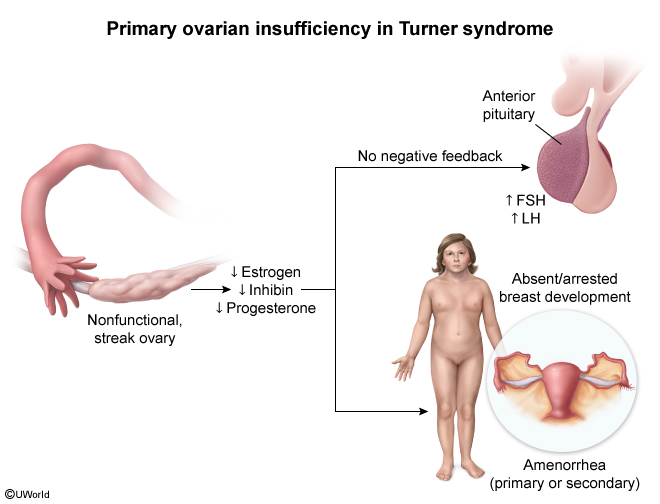
Images
